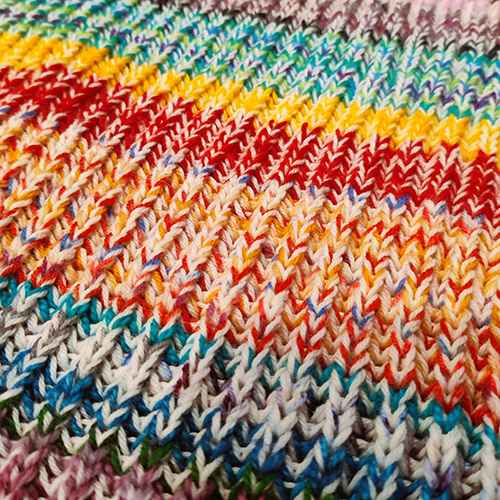Wandering Mind(fulness)
By Stephanie Dawson Pack, MEd, Marketing/Communications Specialist, University of Utah College of Social Work
 My brain often has a difficult time shutting off. At least once a week I wake up
around 2 a.m. and have a hard time falling back asleep because there are just so many
things to think about. I’m the person in the meeting who blurts out a seeming-non
sequitur in the lull because someone mentioned reserving a conference room for next
Monday, so I start singing The Bangles in my head, and that made me think of that
road trip two years ago. We had donuts. Ah! I need to tell my boss about that donut
article I read. I wonder if they’re as good as the cookies we had at last month’s
training. Wait… What are we talking about? Reservations. We were talking about
reserving parking spaces in our meeting yesterday for that upcoming event. Are we
going to do a blog post too? Blog post! I meant to bring this up yesterday, but
forgot then, so now seems like a good time to bring up the click-through rates on
our last blog post.
My brain often has a difficult time shutting off. At least once a week I wake up
around 2 a.m. and have a hard time falling back asleep because there are just so many
things to think about. I’m the person in the meeting who blurts out a seeming-non
sequitur in the lull because someone mentioned reserving a conference room for next
Monday, so I start singing The Bangles in my head, and that made me think of that
road trip two years ago. We had donuts. Ah! I need to tell my boss about that donut
article I read. I wonder if they’re as good as the cookies we had at last month’s
training. Wait… What are we talking about? Reservations. We were talking about
reserving parking spaces in our meeting yesterday for that upcoming event. Are we
going to do a blog post too? Blog post! I meant to bring this up yesterday, but
forgot then, so now seems like a good time to bring up the click-through rates on
our last blog post.
So, it was with some trepidation that I signed up for a mindfulness session through the University of Utah’s employee wellness program. I’d done a bit of meditation here and there, but not much in a formal setting, and certainly nothing long-term … in part because of that very active and transitory brain. It’s been almost 10 years since I was an officially matriculated student, and I couldn’t help but be concerned with my classroom performance as the day neared. (Some things never change.) Was I going to be bad at meditation? Would I be able to engage with the material as intended? Should I have done prep-work before? Where will we go for my partner’s birthday dinner?
The session I attended, led by Assistant Professor Adam Hanley of the College of Social Work, was a modified version of Mindfulness-Oriented Recovery Enhancement (MORE). MORE is a mindfulness intervention that unites complimentary aspects of mindfulness training, third-wave cognitive behavioral therapy, and positive psychology principles into an integrated intervention designed to reduce addictive behavior, psychological distress, and chronic pain. It’s currently being utilized in multiple clinical trials that study its efficacy to address issues from opioid misuse to knee surgery pain. The full intervention is an eight-week program that focuses on three main techniques: mindfulness, reappraisal, and savoring. In our mini-session, we would do one small practice related to each technique, paired with a related sensory component.
The experience was significantly different than what I picture in my head when I reminisce on “class.” Gone were the desks and white boards, replaced with computer screens and IM chat; classmates and instructor each occupied their own little windows instead of sitting across an aisle. However, not all the changes were due to the restructuring that comes with a global pandemic. A single session with no assignments, no grades, and no test also made “class” an entirely different encounter.
Before we got to the practice part, Dr. Hanley shared the evidence base for the model. Research has shown that engaging in meditative practices literally changes our brain’s anatomy. Dr. Hanley explained, “Meditative practice shrinks the amygdala, the part of the brain that processes fear and psychological pain, and thickens the pre-frontal cortex, the part of the brain that engages in executive function; things like planning, decision-making, and self-control.” He also talked about stress and mindfulness as opposites on a scale—the more we engage with one, the less we engage with the other.
We started with a mindfulness practice. Sitting comfortably, eyes closed. In this exercise we focused on awareness of the present, without judgement. How do I feel in this moment? What did this breath feel like?
It went about as well as I thought it would. Being fully in the moment isn’t my main mode. It’s all too easy for me to focus on the fact that we ran out of ketchup and I need to add that to the grocery list … and wonder if I paid that bill that was sitting on my desk. Also, what was the deal with that cliffhanger in my book?
It was during one of these mental tumblings that Dr. Hanley said something that ultimately became one of my main takeaways from the class: “The mind wanders the way the nose smells—without thought and instinctually. Notice. And then bring your attention back to your breath.”
After practicing each technique, Dr. Hanley led our class of five in a short debrief. I mentioned my mental wanderings. “‘My brain is too busy’ could also be said as ‘My brain is very powerful’,” said Dr. Hanley. Right. Note to self: not a wandering brain. A powerful one. He also talked to me about the nature of my thoughts. “Could you listen to that thought—my brain won’t shut up—in the same the way you listen to background music? Could you choose to not give it more credence than any of your other thoughts? Just because you think something, doesn’t make it true.”
Next, we did a reappraisal meditation. Reappraisal is a cognitive restructuring exercise aimed at helping people reframe stressful events to reduce their negative emotional impact. MORE is unique in that it combines mindfulness practices to enhance reappraisal efforts. For example, during a stressful situation, someone could use mindfulness to notice that they are having the thought “I can't do anything right,” while also becoming aware of their emotional reactions to the situation. They could then practice a few minutes of mindfulness to take a step back from these thoughts and emotional responses and become more open to new possibilities and ways of thinking. After practicing a few minutes of mindfulness, folks are usually given some questions they can use to challenge these thoughts (e.g., What is the evidence that this is true? What is the evidence that it is not true?) to develop a new, more positive reappraisal of the situation. “I never do anything right” could be reappraised into, “This situation is stressful, but I've done hard things before and I can handle this now.” This new reappraisal then becomes the new mindful focus to promote resilience and meaning in adversity.
Because our session was of a more general nature, Dr. Hanley primarily directed us to “zoom in” and zoom out” on the texture and shape of sensation during our practice, rather than strong adversity. As I zoomed in on stress, could I break that experience down into smaller parts? What did I learn from those details? Was I feeling “tightness” or “tingling”? Might this “sharpness” instead be called “vibration”? Where were the edges of this sensation? As I zoomed out, could I notice where the sensation was not present? As I considered my place in the world, what did I learn from the broad expanse? What did I learn from a whole forest that I didn’t learn from a single tree?
What struck me most about this experience was how much my body was holding on to. I was about a week into what would be a two-week cold at this point, and my body was significantly underperforming. As we talked through the experience, Dr. Hanley reminded us that the more space we made for a mindful response, the less space we had for stress reaction. “As you train you mind and body to respond to stimuli differently, you can turn down the emotional response,” he said.
 Finally, we engaged in a savoring practice. If we had been in-person, we would have
each been given a rose to center the practice, but since we were attending over Zoom,
we were instructed to choose a physical object near us that made us happy and that
we could engage with in a sensory way. This second bit was particularly important.
“Savoring combats our natural instinct to focus on the negative,” said Dr. Hanley.
“When we pay more attention to our pleasure, we prolong it.”
Finally, we engaged in a savoring practice. If we had been in-person, we would have
each been given a rose to center the practice, but since we were attending over Zoom,
we were instructed to choose a physical object near us that made us happy and that
we could engage with in a sensory way. This second bit was particularly important.
“Savoring combats our natural instinct to focus on the negative,” said Dr. Hanley.
“When we pay more attention to our pleasure, we prolong it.”
Few things bring me more day-to-day, tactile pleasure than knitting. Conveniently, I usually have knitting on or near my person. While I have at times found myself in a trance of knitting motion, I have rarely (if ever) made the work-in-progress itself an object of meditation. Dr. Hanley’s guidance to expand our awareness to all experiences with our selected object had me consider the qualities and textures of the multicolored, knitted fabric in my hands in new ways … and then down adjacent neural pathways of future projects I’d like to work on, random fiber facts, new technique reviews…. Notice, refocus.
In the end, you could say I failed my meditation experience. At multiple points, I felt like breathing through my nose was more torture than peaceful meditation. I had to stop midway through one practice to shut my door so I wasn’t distracted by my family in the next room. In another, I realized I had forgotten to silence my phone when multiple chimes came through, rapidly one after the other. All this was before taking in the various side streets my brain ambled down instead of savoring the physicalities of the moment.
And yet, I don’t think I really would classify it as a failure. I was distracted. Life was in the way. But ultimately, I think that was the point. Mindfulness isn’t a tool for the best of times. It’s a tool for the thick of it—winding mental road, stuffy nose, and all. This class helped me become a bit more accepting of my life and my mind for what they are. Which, success or failure, seems like a valuable end in and of itself.
